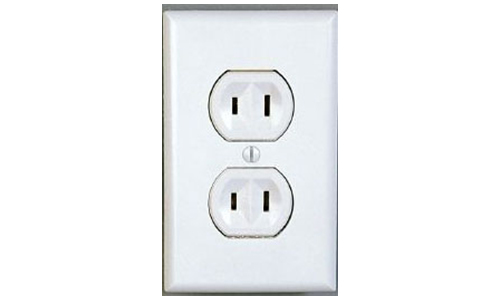
If you live or work in an older building, you may have discovered a common frustration: two-prong outlets without a ground connection. While most new wiring includes a ground for safety, many older homes and commercial buildings were built before grounding became standard (1962 edition of the National Electric Code). This makes protecting sensitive electronics from powerline surges problematic, but there is a solution.
Because typical surge protectors require the ground to work. Using them in ungrounded outlets is dangerous. Not all surge protection technologies, however, are created equal. Let’s discuss the two types:
Shunt Mode (MOV-Based) Technology and the Grounding Problem
Most of the surge protectors you see in big-box stores use shunt mode technology, typically with Metal Oxide Varistors (MOVs) inside. This design works by redirecting surge energy to the building’s ground wire.
Here’s the problem:
• No ground = nowhere to send the surge. In an ungrounded outlet, an MOV-based protector cannot perform its main function.
• Consumers often do not realize that these products must be used with a ground line. Some MOV devices appear to work in a two-prong outlet, but they are either bypassing protection or worse, creating unsafe conditions.
Series Mode Technology: A Different Approach
Series mode surge protectors—like those designed by Zero Surge—work differently. Instead of shunting surge energy to ground, they filter the incoming surges, slowing them down, store any residual energy in a series of capacitors, and then slowly release what’s left to the neutral line. A safe and effective method in ungrounded outlets.
Key differences:
• No reliance on ground: Because series mode protection does not divert energy to the ground wire, it is fully effective in both grounded and ungrounded outlets.
• No sacrificial components: Unlike MOV technology, series mode devices don’t degrade, so their performance remains dependable and consistent over time.
• Cleaner power: Series mode designs also filter out EMI and RFI noise disturbances on the power line.
Important Safety Note
While series mode technology provides effective surge suppression without a ground line, you still need to consider overall electrical safety. An ungrounded outlet can pose shock hazards and may not meet current electrical codes. A ground fault circuit interrupter (GFCI) receptacle can be installed to provide some protection from shock if there is a fault in any connected equipment, but you must label the GFCI as ungrounded. For maximum safety, consult a licensed electrician about upgrading wiring and adding proper grounding where possible.
The Bottom Line
If you’re in a building with ungrounded outlets—common in pre-1960s homes, some schools, historic buildings, and certain industrial settings—your protection options are limited.
• MOV-based surge protectors and unsafe to use and ineffective without the ground line.
• Series mode surge protectors provide reliable surge suppression with or without a ground connection, protecting your electronics and your peace of mind.
That means you can safely protect expensive electronics like computers, AV systems, medical equipment, and point-of-sale devices when a ground line is absent.

